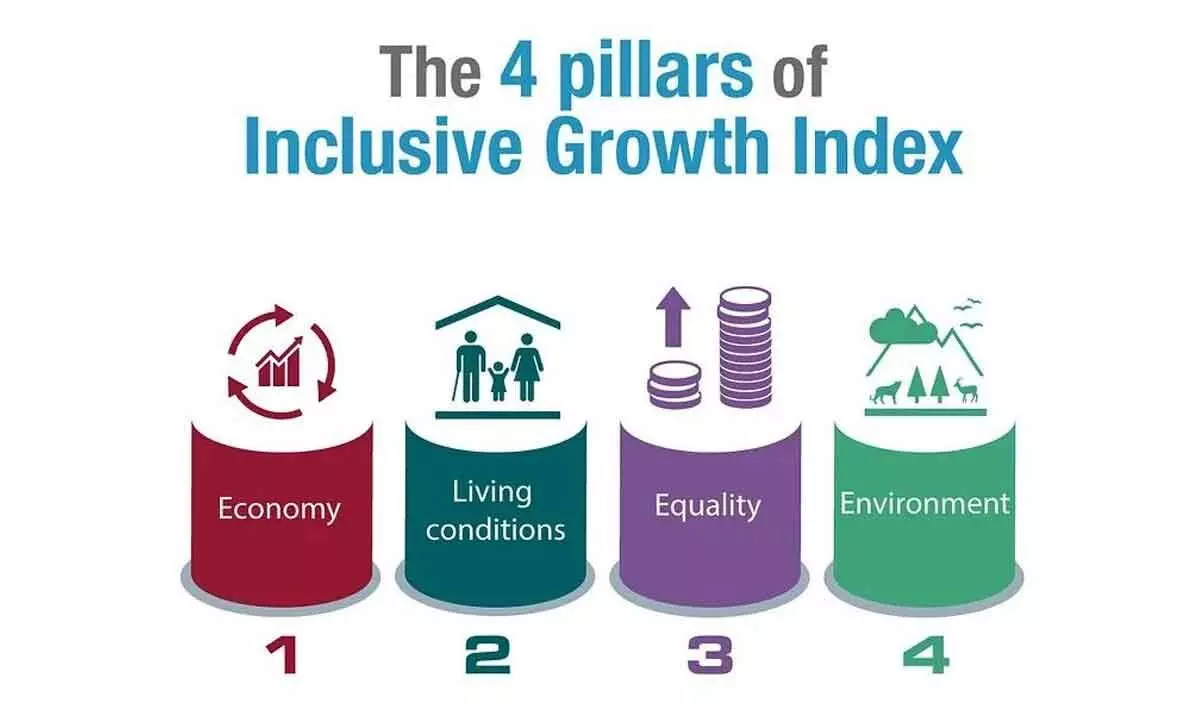World leaders must pool in resources to achieve equitable economic prosperity
As far as India is concerned, growth for 2025 is projected at 6.5%

There has been agreement to further deepen coordination among all stakeholders, including on ways to support early exchanges on debt sustainability assessments and debt relief parameters ways to address current liquidity concerns
A threadbare discussion on "Building resilience in the world economy", under the joint aegis of the World Bank Group and International Monetary Fund (IMF), as part of their annual spring meetings came up with some pinpoint conclusion regarding the heightened tension in the Middle East.
IMF Managing Director Kristalina Georgieva put it quite aptly while stating "What we want is a world where growth is stronger, living standards are higher and low income countries are not falling down economically. A world that is more resilient to the shocks that will continue to come"
The eagerly awaited IMF report ‘World Economic Outlook’ has indicated that the baseline forecast for the world economy will continue to grow at 3.2% during 2024 and 2025 like in 2023, while the advanced economies have grown at 1.6% and 1.7% in 2023 and 2024, respectively. They are projected to grow at 1.8% in 2025.
The growth of the United States will at a lesser level at 1.9% for 2025; as against 2.5% and 2.7%, respectively in 2023 and 2024.
The emerging market and developing economies are projected to grow at the 2024 level of 4.2% in 2025. However, there is downfall in China’s growth rate at 4.1% in 2025 as against 4.6% for 2024 and 5.2% for 2023. As far as India is concerned, growth for 2025 is projected at 6.5% as against the impressive 6.8% (2024) and 7.8% (2023).
These figures of the past two years and the expected growth in 2025 indicate that economic activities were surprisingly resilient through the global disinflation of 2022-23. Despite the central bank’s high interest rates and employment, incomes held steady as favourable demand and supply developments have supported major economies. As inflation has been getting under control, there is a likelihood that the central bank would lower interest rates, depending on the headline inflation getting to the targetted inflation on durable and sustainable basis, even though global markets expect the commencement of easing of interest rates as the central banks are on status quo.
In their bid to exercise control on fiscal deficit, even developed countries should tighten their fiscal policies with the aim of curbing high government debt levels.
There has some progress on agreements reached by Zambia and Ghana and advanced discussions as regards Sri Lanka and Suriname.
According to the report, participants agreed to shorten the timeline to form an official creditor committee (OCC), a move that would facilitate communication and coordination with private creditors and accelerate their own restructuring process. There has been agreement to further deepen coordination among all stakeholders, including on ways to support early exchanges on debt sustainability assessments and debt relief parameters, work on use of state-contingent debt instruments and ways to address current liquidity concerns.
According to IMF's Global Financial Stability Report, the near-term risks to financial stability have receded as it's expected reduction in the rate of inflation (or disinflation) is ‘entering its last mile’. The report says “confidence in soft landing for the global economy is growing against a backdrop of better than expected economic data in many parts of the world. However the risks to financial stability arise from salient near- term financial fragilities and medium term vulnerabilities including growing public and private debt and China's housing market downturn”.
It talks of risks to corporate private credit and the growing threat of cyber-attacks.
The current geo political tensions both in the Middle East and between Russia and Ukraine and supply chain disruptions along the Red Sea, which have already disrupted shipping through the Suez Canal, are the greater risks to global growth and global financial stability. Moreover the continuous funding of Israel and Ukraine by developed countries has reduced their respective funding to the high-debt and low-income countries.
The income gap between the world's wealthiest and poorest countries was widening for the first time this century, the World Bank warned.
According to its report on “The Great Reversal: Prospects, Risks and Policies in International Development Association Countries”, the bank looked at the opportunities and risks facing the 75 countries that are eligible for grants and zero to low interest loans from IDA. It found that between 2020 and 2024, the average per capita incomes in half of IDA countries - the largest share since the start of this century - have been growing more slowly than those of the wealthy nations.
One in four people in IDA countries live in less than $2.15 a day. “The welfare of these countries has always been crucial to the long term outlook for global prosperity”, the report stated.
These world level meetings should ultimately result in solutions and drawing an action plan to address the present and upcoming challenges facing the global economy and global fiscal and financial stability, including climate change and adverse impacts on human lives and economy. Any further delay will widen the income equality and further suffering in low and less developed countries.
The hope is that all the global leaders would address these challenges in their perspective and achieve global peace and economic prosperity thereby ushering a safe and secure world.
(The author is former Chairman & Managing Director of Indian Overseas Bank)




